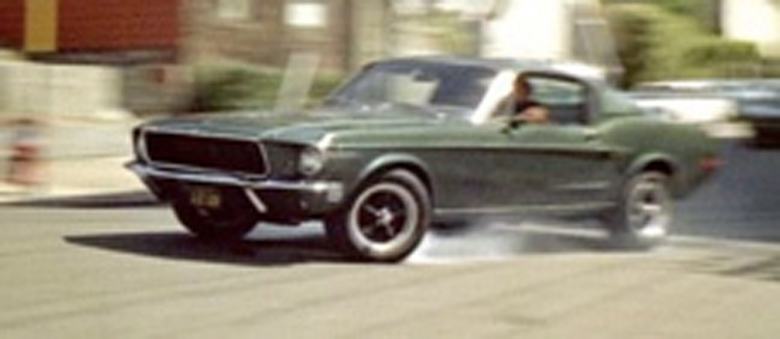Reviews
Peter Yates
USA, 1968
Credits
Review by Thomas Scalzo
Posted on 07 July 2009
Source Warner Brothers DVD
Categories Favorites: The Action Movie
When first we meet Lieutenant Frank Bullitt, he’s fast asleep, dressed in a pair of cozy-looking pajamas. Jarred awake by his partner Delgetti buzzing at his apartment door, he stumbles to let him in, and then lurches back to bed. “What time d’you get to bed this morning, Frank?” asks Delgetti, moving into the kitchen to pour a glass of OJ. “About 5:00,” Bullitt replies, visibly fighting down his hangover nausea and feebly reaching for what he thinks is his glass of juice. When Delgetti instead takes a gulp and begins to read the morning paper, aloud, Bullitt stares at him in disgust. “Why don’t you just relax and have your orange juice, and shut up,” he says, obviously not looking forward to whatever assignment his captain has in store, and clearly regretting whatever it was that put him in such a state.
What’s intriguing about this introduction to Bullitt is not so much its originality - untold cop stories begin with a besotted hero grudgingly coming back to life after a long night - as its incongruousness with everything that follows. For aside from these opening frames, Bullitt is a consummate man’s man—unflappable, assured, and impeccably cool. Sure, we have the occasional non-action scene - Bullitt buys frozen dinners, Bullitt takes his lady friend to dinner - to show us he’s not all work. But never again is the man as vulnerable, or as human, as he is in these opening moments. Inevitably, when dealing with an intricate pulp crime drama like Bullitt, plot comes first. But the subtle characterization in this opening scene adds a welcome layer of complexity to the story and makes viewing the film a richer experience. Not only do we keep our eyes peeled in order to get to the bottom of the mystery, but also in hopes of catching another clue as to who this hard-boiled cop in the cardigan really is.
With this in mind, we watch as Bullitt collects himself enough to report for his latest assignment: babysitting Johnny Ross, the district attorney’s star witness. It seems a senate subcommittee hearing is scheduled for a few days hence and it’s Bullitt’s job to make sure Ross is on time and able to testify. Complicating matters is the Chicago crime syndicate who want the man dead before he can talk. And so, not long after stumbling out of bed, Bullitt finds himself in a tight spot: If the witness dies, the DA will have Bullitt’s badge. And as long as the witness lives, Bullitt is an enemy of the Mob. When Bullitt asks his captain what recommended him for such illustrious duty, he’s told, “You make good copy. They love you in the papers.” Again, we’re tantalized by the Bullitt back-story. What had he done to make the headlines? The mystery deepens.
Soon enough, however, our intrigue about Bullitt is forced to the backburner by the story of Johnny Ross and the men who want to kill him. At the start of the assignment, the case seems fairly simple: guard the guy for a few days and then hand him over to the DA. But when Johnny’s hideout is discovered, and he finds himself on the wrong end of a shotgun, things begin to get interesting. Instead of outright fear at his own mortality, Johnny appears confused. He even manages to stammer out “They told me…” before taking multiple shots to the body. Add to this the revelation that Ross actually unlocked the door for his would be assailant, and Bullitt’s ordinary case has erupted into a full-blown murder mystery.
Enhancing the obfuscation are several unusual filmmaking techniques in play throughout the picture. One persistent strategy involves positioning some sort of obstruction - be it a plate-glass window, a forest of legs, or another character’s head - between the camera and the central action of the scene. In most cases the action is still discernable, but the viewer is deliberately relegated to the role of outside observer, spying on the scene as opposed to being immersed in it. And in many instances, the dialogue of such scenes is muted, requiring us to distil the importance of the scene based on visual activity alone. There are also several instances of a scene being shot from a location adjacent to that of the main action. When Ross undergoes emergency medical procedures in an attempt to save his life, for instance, instead of shooting the scene from within the hospital room, Peter Yates places his camera in the hallway outside. Thus, we watch the traumatic proceedings at a distance, peering into the room like a nosy neighbor.
The net result of such storytelling strategies is to cast the viewer into the role of detective. Like Bullitt, we’re compelled to pay attention to everything we see and hear, to piece together clues, to ponder the significance of a subtle event, to wonder what is being said behind glass walls. Such reliance on audience attention span was surely risky, even in 1968. And the technique is a particularly tough sell to a present-day spectator accustomed to insecure pictures that go out of their way to ensure viewer passivity. No doubt many modern viewers will find themselves unable to get past the film’s slow pace and nuanced storytelling. The reward, however, for those willing to allow themselves to fall under the film’s spell, is an engrossing crime drama featuring a masterfully understated performance by Steve McQueen, and, eventually, several terrific - and iconic - action set-pieces.
First on the list is the sublime car chase through the hills of San Francisco. Comprising over twelve minutes of dialogue-free runtime, the sequence is a perfect amalgam of terrific stunt work, deft editing, and canny use of music. For the first three and a half minutes we watch as Bullitt and his quarry weave through the twisty streets, a cool jazz score the perfect accompaniment to the slick game of automotive cat and mouse. And then the hunted decides to make a break for it. The music stops, a seatbelt is snapped in place, and the race is on. With squealing tires and revving engines the only soundtrack, the combatants burst out of the confines of the city and rocket onto the highways beyond.
In conspicuous contrast to much of the preceding film, this celebrated scene places the viewer smack dab in the middle of the action. No longer are we compelled to peer past obstacles or wonder at the significance of what’s taking place behind glass windows. Instead, we’re treated to an enticing mix of behind-the-windshield shots offering a first-hand view at the chase, intimate close-ups of the drivers’ determined faces as they navigate the perilous roadways, and unobstructed cutaways of the cars ripping around corners. Not only does the inspired editing of these shots achieve the astounding feat of keeping us riveted to the screen for minute after minute of wordless action, it also highlights the narrative significance of the sequence. Obscured shots aren’t needed here because Bullitt isn’t groping in the dark for answers. The men who want Ross dead are in his sights, and it’s time to get them.
Less famous, but equally enthralling, is the final showdown at the airport, full of gunfire drowned out by the roar of turbines and roving spotlights randomly illuminating the hunter and the hunted as they dive under jets, crisscross the runway, and desperately take cover behind the low-lying scrub brush. Eventually, the riotous chase leads back into the airport proper, and to the climax of the film. In the midst of all this action, however, we reach an unexpected moment that reminds us that, though the mystery of the plot is soon to be explained, the mystery of Bullitt remains. Convinced that his man is waiting on the other side of a closed door, Bullitt draws his gun, the action accompanied by a musical cue. In astonishment, we realize we’re witnessing the first time Bullitt has drawn his weapon. Clearly we’re meant to note the event, and attach significance to it. But why? What is it about the man’s past that makes this action so momentous? Before we have time to ponder the question, however, Bullitt has burst through the door, gun in hand.
After the last shot is fired and the sirens have faded into the night, we once again find ourselves in Bullitt’s lonely apartment, with our hero looking much the worse for wear. He splashes some water on his face and stares at himself in the mirror. He looks tired. But there’s something other than fatigue in his eyes: a sense of regret, possibly, or of doubt—the look of a man contemplating staying up till five, with a bottle, trying to forget. And as the camera shifts away from our hero, to focus directly on the violent tools of his trade, we begin to understand why.
Of course, Frank Bullitt was neither the first, nor the last, loner detective to grace the big screen. From the many incarnations of Philip Marlow to Clint Eastwood’s Dirty Harry to Al Pacino’s Vincent Hanna in Heat, the history of cinematic crime storytelling is chock full of men whose dedication to work always gets in the way of anything resembling a meaningful relationship or a normal home life. And in those rare instances where domesticity is part of the story, the film suffers. Take Fritz Lang’s The Big Heat. For the first act, our hero is a contented family man, with a doting wife and an adorable little girl, and the film drags. Only when the family is brutally taken out of the equation do things get interesting. It seems that when these figures have something to lose, they are unable to take the authority-defying risks that make them appealing. Perhaps this appeal lies in offering a historically male audience vicarious immersion in a world where they don’t have to answer to anyone. It’s only natural, then, that we smile when Bullitt, asked about work by his ladylove, replies, “It’s not for you, baby.” Because deep down, we know it’s not for us either. And that’s why we watch.
More Favorites: The Action Movie
-

First Blood
1982 -
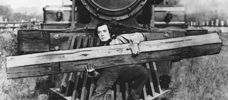
The General
1926 -
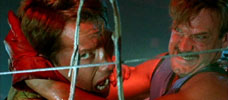
The Running Man
1987 -

Guns
1990 -

Highlander
1986 -
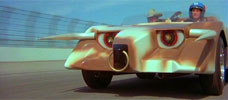
Death Race 2000
1975 -
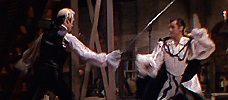
Scaramouche
1952 -
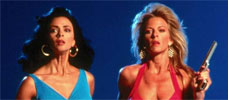
Do or Die
1991 -
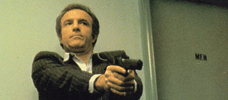
Thief
1981 -
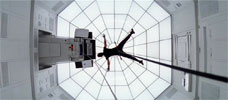
Mission: Impossible
1996 -
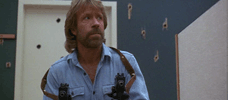
Invasion U.S.A.
1985 -

Rambo: First Blood Part II
1985 -

Bullitt
1968 -

Hard Hunted
1992 -
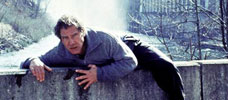
The Fugitive
1993 -
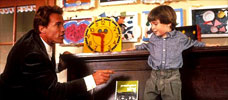
Kindergarten Cop
1990 -
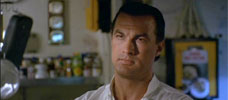
Under Siege
1992 -
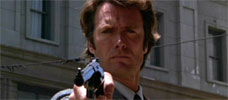
Dirty Harry
1971 -
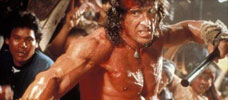
Rambo III
1988 -
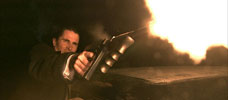
Public Enemies
2009 -
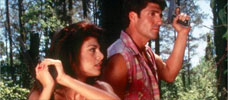
Day of the Warrior
1996 -

The Good, the Bad, the Weird
2008 -
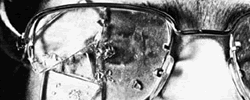
Straw Dogs
1971 -
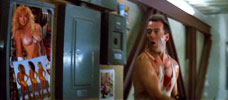
Die Hard
1988 -
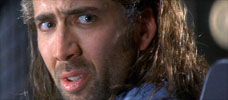
Con Air
1997 -
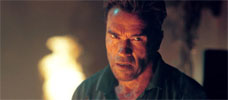
Collateral Damage
2002 -
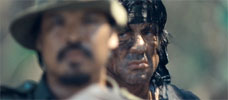
Rambo
2008
We don’t do comments anymore, but you may contact us here or find us on Twitter or Facebook.



